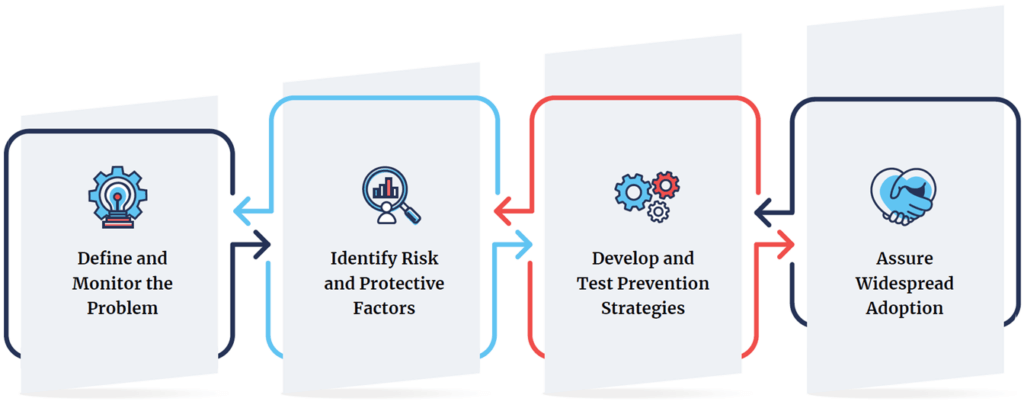The public health approach
Our collective strategies – at the national and local levels – seek to embed the public health approach to violence prevention.
Public health is focused on the health, safety and well-being of entire populations – it strives to provide the maximum benefit for the largest number of people.
Public health science is multi-disciplinary. It relies on knowledge from multiple agencies and sources. It emphasises the importance of partnership working across sectors including policing, health, education, justice, the private and voluntary/community sectors. They work together as a collective.
We follow the Centre for Disease Control’s four-step model to taking a public health approach to preventing violence, with each step informing the activity of the next.

Step 1: Define and monitor the problem: Across our partnerships, we have worked to undertake Strategic Needs Assessments which compile data on local populations and from multiple sources. They help to define and enable the monitoring of the prevalence and severity of serious violence, who it effects and where it occurs.
Step 2: Identify Risk and Protective Factors: We apply our knowledge of contextual safeguarding and understanding of the risk factors to what is a risk to committing violence or that makes someone vulnerable. Examples of risk factors include:
- Exclusion from school
- Exposure to substance misuse
- Exposure to domestic abuse and other adverse childhood experiences (ACEs)
- Contact with police/justice services
And similarly, we know the protective factors that can help prevent or mitigate. Examples of protective factors include:
- Engaged in education, training and employment
- Stable housing, positive health and wellbeing
- Strong supportive family, friends and role models trusted to provide advice
Step 3: Develop and Test Prevention Strategies: This informs the way the Violence Prevention Partnership invests to test intervention approaches and the way our partners develop and evaluate their own local plans and activities.
Step 4: Assure Widespread Adoption: Finally, through evaluation and an understanding of what works, we play that evidence back into our local systems. We learn from what has an impact, from what is cost effective, from what is scalable. Through this, we are able to support a more widespread adoption.